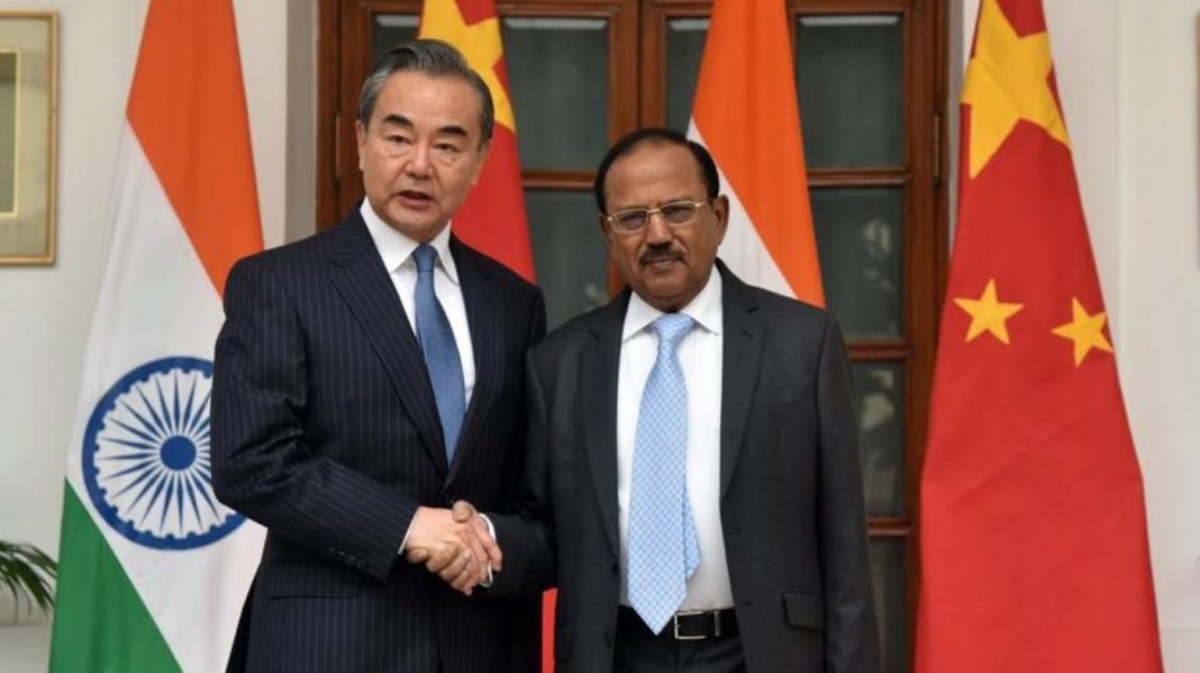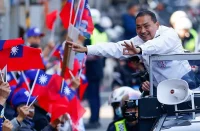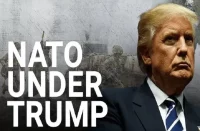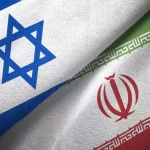The civilian-military relationship is a complex matrix. In ‘wartime’, this is more so when civilian leaders who never held a killer’s weapon in their palms are called upon to take decisions on the passage of arms. Of course, there are strong-willed leaders who force their will. Bismarck was one such leader — Stalin another — who lacked real military service.
Stalin had the additional advantage that every Red Army unit also had a commissar, an official of the Communist Party, attached to it who would be a prescriptive figure of authority to ensure that the political leadership got an independent feedback uncluttered by the military’s corporate interests. Insubordination was unheard of in the Prussian and Soviet armies.
The most famous civilian-military confrontation in modern history occurred, perhaps, when then US President Harry S. Truman relieved General Douglas MacArthur of command of the US forces in Korea in April 1951.
A flamboyant and egotistical personality, Gen. MacArthur had devised some brilliant strategies and military maneuvers that stopped the invading forces of North Korea in the early days of the war (which began in June 1950). Resting on the laurels, MacArthur argued for a policy of pushing into North Korea to completely defeat the communist forces.
Truman went along with this plan, despite his gut feeling as a politician that the communist government in Peking might take such invasion against a fraternal neighbour as a hostile act. But MacArthur assured Truman that the chances of a Chinese intervention were slim.
However, in the winter of 1950, hundreds of thousands of Chinese troops did cross into North Korea in waves after waves and flung themselves against the American lines, driving the US troops back into South Korea. MacArthur then asked Truman for permission to bomb China and to use Nationalist Chinese forces from Taiwan against the People’s Republic of China.
This time around, Truman flatly refused and a very public showdown ensued resulting in MacArthur’s dismissal. Truman, in an address to the nation justifying his action, said it “would be wrong—tragically wrong—for us to take the initiative in extending the war… Our aim is to avoid the spread of the conflict.”
He explained, “To make sure that the precious lives of our fighting men are not wasted; to see that the security of our country… is not needlessly jeopardized; and to prevent a third world war,” he had fired General MacArthur, “so that there would be no doubt or confusion as to the real purpose and aim of our policy.”
The American public opinion was strongly against the sacking of the charismatic general (who was also skilled in political skulduggery among Washington elites.) But Truman stuck to his decision without regret or apology. Eventually, MacArthur would “just fade away,” and the American people began to understand that the general’s policies and recommendations might have led to a massively expanded war in Asia.

The prerogative to start a war and to end it must always lie with the civilian leadership. That is why New Delhi’s decision which was announced on June 19 that the Indian Army has been given the freedom to take necessary steps along the border —and not to limit the ability of commanders of frontline troops to take whatever action they deem necessary on the Line of Actual Control on the Chinese border — becomes debatable.
Detractors of the government flippantly interpreted this decision as an evasive action by PM Modi to ‘pass the buck’ to the military if something untoward happened. But the point is, military must be held firmly responsible and accountable for its actions. A high degree of ambivalence has already appeared in the air and the Indian media is awash with unsubstantiated reports (largely attributed to military ‘sources’) and rumour mongering.
On the contrary, the GCTN, an organ of the Chinese state media, said in a commentary on July 5, “Despite the 1962 truce, the Indian side has never ceased its efforts in pushing the LAC forward. This is the root cause for the border disputes between the two neighbors. The Galwan Valley conflict is a direct result of New Delhi’s provocations.”
Suffice to say, it was only appropriate that PM visited Leh on June 3 to personally assess the situation, where he also met the GOC IV Corps Lt. Gen. Harinder Singh, before deciding to elevate the diplomatic contacts with Beijing to the political level and to bring in the cabinet minister in charge of national security (defence and security establishment) and India’s Special Representative on the border dispute, Ajit Doval, who reports to him directly, as India’s point person to discuss the issues with the Chinese leadership.
To be sure, sniping has already begun. The formidable US lobby in Delhi has begun to decry, discredit and degrade Doval’s mission. The objective is clear: bring the Sino-Indian standoff to a flashpoint that would compel Modi government to take shelter under an American umbrella.
The US has all along interfered in India-China issues. More than ever before, a Sino-Indian confrontation fits in perfectly with the US’ regional strategies today in Asia. Day-to-day monitoring and interference in our news cycles is taking place.
Most important, on a day-to-day basis, the Australian Strategic Policy Institute (ASPI) is providing vital inputs purportedly based on satellite imageries from the Ladakh border. Now, ASPI is known to be an anti-China lobbying group funded by Australian Defence Department (reportedly, 4 million Australian dollars annual grant) and generously supported by the US, British, and some other governments and major weapons makers. The ASPI analysts specialise in manufacturing “research materials” pointing to the strategic threat of China.
Doval’s talks with Wang Yi on Sunday are already being nicely dissected and shown as a mere pantomime played by the Chinese side. The US lobbyists merrily over-interpret the readouts from Beijing and New Delhi (here and here) to debunk the common understanding that emerged after Sunday’s talks.
How can delicate negotiations pertaining to war and peace be possibly conducted under such circumstances? Doval is an ace negotiator and is immensely experienced in handling India’s national security challenges, especially involving China and Pakistan. His source of strength is also that he enjoys the confidence of Modi.
Above all, Doval belongs to a vanishing breed of top officials who sees national security challenges entirely through the prism of Indian interests, and has no patrons abroad. Quite obviously, this poses a particularly nightmarish situation to the Americans who are control freaks.
But no country will allow bazaar gossip by its own citizens over its national security concerns. Surely, something can be done to put an end to such subversion? The MacArthur syndrome haunts India. Rogue elements within our establishment are planting media leaks with ulterior intent.
Source: The Indian Punchline














What does the US see in India to stand up to PRC ? Is the aim to destroy India ?
With what will the Indians fight the PRC ? The MIG 21 ?
INDIAN MIGs crash at the minimum once in 60-90 days – and not in border areas,PLAF crashes Indian Sukhois and Choppers at will in the North East – especially in Arunachal and Sikkim – by EMP and EW – for which Indians have no Counter measures.In essence,the PLAF is conversant with all the IAF and ADS platforms in the Eastern Theatre.
AND PLAF is using its own Jets made for their specific needs – and no IAF pilot has even a reasonable idea about the capabilities of the latest Chinese Jets and the skills of their pilots.And the IAF will learn soon, the hard way.
So Y are MIGs crashing ?
The Alt view is that IAF allows and plans the crashing of the MIGs.The aim is to crash the ,MIG and spare the pilot.Some of the pilots who are a liability or a burden or a risk,and are not exiting the IAF,also have a magical death,in the MIG crashes. The IAF pilots have blind faith on their technicians.The easiest way to kill a pilot in a MIG crash, is to jam or delay the ejection.
So what is the Grand Plan here ? MIG crashes suit the Arms dealers and the IAF honchos, and the Politicians and Bureaucrats ! In addition,it builds up the media hype,and drowns out the allegations of corruption,in news arms procurements.
MIG crashes also SUITS the IAF honchos wishes to make direct imports and NOT insist on tech transfer to HAL and DRDO – as IAF has no faith on Indians, and it provides post retirement benefits to the IAF honchos and employments to the kids of the IAF honchos. Jet acquisition, being a technical matter,THE TECHNICAL CLEARANCE IS ALL THAT COUNTS – and that is where the money is made.Thereafter,the price negotiation is done by bureaucrats and Politicians,who have never even flown a jet.The MIG crashes, JUSTIFY the TECHNICAL NEED for aircraft acquisition, to SUIT the DESIRES of the IAF honchos.
The Genius of the MIG crash model,is such that,the GOI conned the Indian Supreme Court to state that the Court had no ken to go into the pricing and corruption of the Rafale deal,The GOI stated that the Court should ONLY look into the process of procurement and pricing (As the process was laid down and planned,by the scamsters)
The Origin of the planting of this seed of genius of crashing MIGs, into the brain of the IAF honchos,Politicians and bureaucrats – are the ARMS DEALERS,WHO ARE CAMPED IN NEW DELHI. It is these arms dealers who make the IAF acquisition strategy, and also fund,defense think tanks in India and political parties.These arms dealers are funded by INT agencies and Global arms suppliers
So the MIG crashes are a part of a PLAN – and NOT random chance or training issues or engine failures.dindooohindoo
By deferring the MIG replacements interminably,the IAF and GOI are in a position of NO CHOICE and NO NEGOTIATION capacity.
In the meantime IAF has bought Rafale jets.The Rafale fighters have ALREADY BEEN FLOWN by PAF pilots, in the Middle East – but let us assume, that the IAF is getting customised Rafales !
The Anovirum Organum of the IAF crashes – how the IAF plans its crashes – illustrates the disaster of military planning in India !
Step 1 – Identify the Pilots who are a pain or a threat – in terms of raising a stink,on matters of corruption,harassment, incompetence, rape …
Step 2 – Identify the Pilots who are or will likely be, medically or physically impaired,to fly fighter jets, based on their medical and genetic history – and thus, be a dead weight on the IAF – and then,probably turn against the state
Step 3- Identify the aircrafts wherein no insurance is claimed for years or a decade,as a part of the Group or Cluster Accident Insurance Policy – and the insurance paid,is essentially down the drain – especially if paid to the private sector.Since no asset replacement is possible – post crash,the claim is only for the Book Value or Technical value of the aircraft – which is not a material amount
Step 4 – Identify the aircraft with the highest allocated cost (spares and maintenance/repairs and time and opportunity cost of engineering time),per effective operating hours per annum.
Step 5 – Identify jets made by HAL and spares for Jets supplied by HAL – which IAF pilots DO NOT WANT TO FLY OR USE.
Every 60-90 days,the above list is upated and the Chief presses the KILL BUTTON.The Defense Minister is a Rajput clown, who wears a lungi.He is the LEADER of the IAF.
https://www.nationalheraldindia.com/india/lemons-and-om-to-ward-off-evil-as-rajnath-singh-takes-delivery-of-rafale-jet
For the West – who do not know – the lungi is a skirt,worn with a panty.In the above picture you can see the skirt.